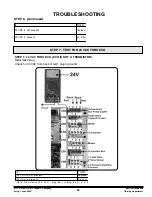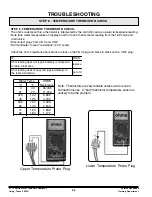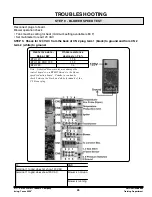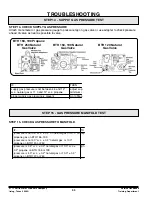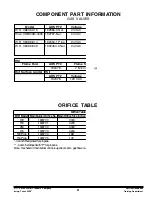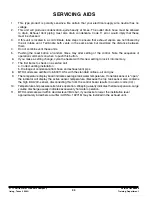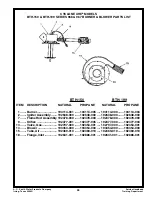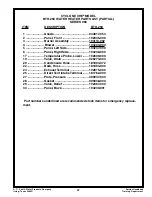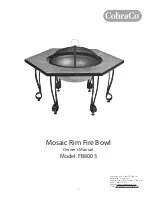
A. O. Smith Water Products Company
Service Handbook
Irving, Texas 2000
©
Training Department
35
QUESTIONS AND ANSWERS
Q:
How much electrical power is required for a BTH water heater?
A. The BTH models draw approximatley 5.0 Amps Max.
Q.
When should BTHs be delimed?
A. Many variables affect the lime build up process including:
• Water temperature - the amount of lime accumulation during the same period of time will be nearly
2 times greater if water is stored at 140 degress F than at 120 degrees F. A 180° setting may
accumulate seven times more lime - in a period of time - than a 140° setting.
•
Volume of water - the more gallons flowing through the BTH, the more rapid the accumulation.
•
Hardness - the harder the water the quicker lime build up occurs. 1 to 3.5 grains per gallon is "soft,"
3.5 to 7 grains per gallon is "moderate," 7 to 10.5 grains per gallon is "hard" and 10.5+ grains per
gallon is "very hard." (An aspirin is about 5 grains. One grain is equal to 17.1 parts per million.)
A. Deliming should be done when a slight rumbling or popping sound is detected when the main burner
is on. Check for accumilation through the clean-out opening.
Q.
What effect will lime build-up have on the BTH water heater?
A. One eighth inch of scale buildup may reduce efficiency as much as 22%; a 1/4 inch buildup, as much
as 38%.
Less efficient heat transfer means more heat exchanger expansion/contraction stress and premature
leakage.
Because heat transfer to the water is made through a (relatively) small diameter, coil type exchanger
tube, expansion and contraction as well as the shape of the exchanger greatly reduces buildup on the
heat transfer surface. The bottom of the tank should be checked for dislodged accumulation.
Q.
Anode rodes (4) provide additional protection against corrosion. When should these be
replaced?
A. When large gauges or pits appear in the anodes, replace them.
Q.
How often should these anodes be inspected?
A. Approximately every six months.



